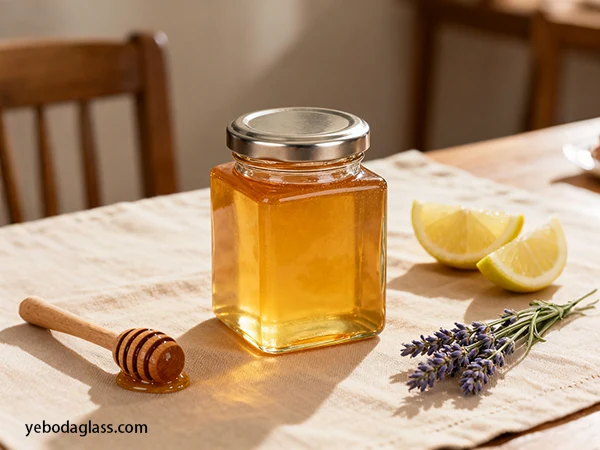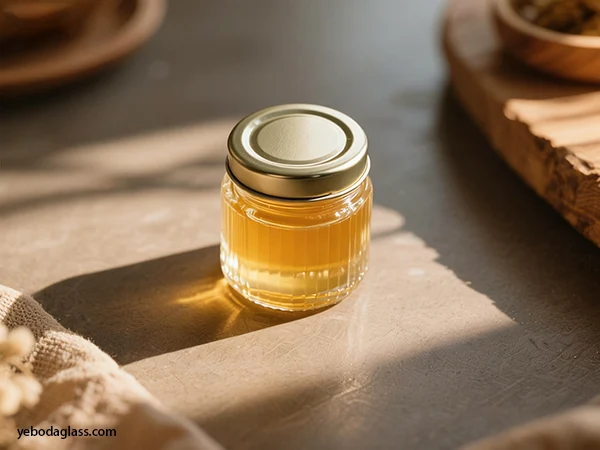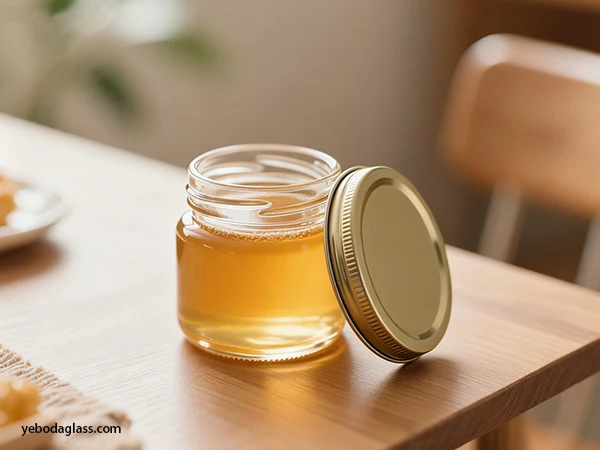Wstęp
packaging solutions, available to both artisan, hobbyist, and commercial producers of honey. It reviewed the market segment and its dynamics, the aesthetic and functionality, the cost, the regulation, and the słoik miodu available for a new package. This report outlined the growing demand for premium packaging, driven by demands for quality and sustainability. Premium have a higher initial cost, but can be promoted as part of an attractive brand, marketed to consumers and keep products longer for shelf-life. Segmentation Markets and Producer Profiles słoiki szklane Producer segments are:

Backyard/Hobbyist Beekeepers:
e.g., manage <25 hives, and commercial sales processes are directly to consumer, highlighting flavors and uniqueness. Their packaging is focused on aesthetic and image surrounding the product and storytelling.
Sideliner Beekeepers:
- e.g., in between hobbyist and commercial scale, have at least a local footprint. Their packaging requirements are a blend of artisan and commercial. Commercial Producer:
- e.g., full scale industrial beekeepers with over 300 hives and farming businesses that are monitored in imported are selling honey and not beeswax or other honey products. Their packaging has to be functional to the operation, but also can integrate into automated processing and flow, while remaining market-value driven. Understanding these producer segments is critical to developing glass jar packaging solutions that cater to the needs and desires of specific groups.
- Premium Aesthetic and Branding Considerations Premium glass honey jars convey quality through design, material, and customization.
Design Elements:
Jar Shape:
Classic or modern shapes, unique designs (e.g., hexagonal with bee motifs) enhance brand identity.
Glass Clarity and Color:
- High clarity demonstrates the quality of honey. Frosted or amber or colored glass adds both uniqueness and protection to the jar. Proportions and Ergonomics:
- Visually pleasing and easy to hold. Surface Treatments
- Frosted/Etched glass: Estudo de caso: Pote de mel com colher para uma marca de mel brasileira
setembro 14, 2025
- O pote de mel personalizado com colher oferece durabilidade, uso ergonômico e embalagem sofisticada, preservando a qualidade do mel e aumentando sua visibilidade nas prateleiras. Color Infusion:
- Tłoczenie/wytłaczanie: Custom Packaging
- Labeling: signifies the effort and quality of the materials, print, and finishes (foil, tactile varnishes, etc.).
Lid Design:
- available in wooden, ceramic, or specialized metal finishes, all elements need to ensure an airtight seal. Custom Jar Shapes:
- Jars can also be designed in custom/unique shapes if exclusivity is a top priority. Branding as a Whole
- All the elements can be integrated together to represent a brand identity through color, typography and imagery analysis. Environmental Sustainability
The use of recycled glass and environmentally sustainable materials meets consumers’ perceptions and values. Premium features add costs that are usually accompanied by higher MOQs.
Functional Requirements & Performance Specifications
Premium glass jars will need to meet functional requirements to consumer satisfaction and quality of the jar. Manipulation of any performance requirements needs to balance the premium aspects of the packaging jar.
Sealing Integrity:
An airtight seal is critical in preventing contamination, lengthening shelf life and maintaining honey quality. These elements require compatible materials, tamper-evident features and proper sterilization.
Dispensing and Handling:
- ケーススタディ:ブラジルの蜂蜜ブランドのひしゃく付き蜂蜜瓶 2025年9月14日
- ひしゃく付きのカスタム ハニージャーは、耐久性、人間工学に基づいた使いやすさ、洗練されたパッケージを備えており、ハチミツの品質を維持し、棚での存在感を高めます。 Stack-ability and Logistics:
- Good functionality will allow jars to be perfectly packaged and stacked. Cleanability:
- Easy to clean, therefore re-marketable. All materials must be compliant with food safety (e.g. FDA in USA, EU regulations).
- Cost Analysis and Value Proposition A cost analysis is best made when considering higher-end glass jars.
- Zgodność z przepisami: Manufacturing Costs:
Reflect the higher cost of glass when shaping, coloring, or finishing customized glass items.
Customization Costs:
Custom lid, embossed labels, or difficult-to-job label design implementation are more expensive.
- Economies of Scale: Larger volumes reduce the unit cost of glass, while smaller amounts are more expensive. Custom shapes for glass may have minimum order quantities around 30,000 units.
- Transportation and Handling: Generally heavier than plastic, glass adds to shipping costs and robust packaging is essential with handling glass as damages contribute to waste.
- Value Proposition Added Consumer Perceived Value:
- Consumers perceive glass as whether quality, purity, or sustainability provides an opportunity for premium pricing. Brand Differentiation:

Glass provides the opportunity for design and finish differentiation that could positively help the brand.
- Consumer Apprehension: If there has been any recent consumer surveys that clarify consumer preference to glass as sustainable packaging.
- Product Quality: Glass is inert and will not leach into honey, thus maintaining flavor and quality.
- Brand Narrative: Good Packaging is like a blank canvas waiting for the brand story and visceral experience to be shared with consumers.
- Cost-Benefit Final consideration is the fact that making upfront costs investment can provide volume sales that enhance brand equity and develop consumer loyalty.
- Regulatory Compliance and Material Certification Before a product can be marketed, it must meet relevant regulatory and certification requirements.
Regulations
U.S. Food and Drug Administration (FDA):
The FDA is governed by Title 21 of the Code of Federal Regulations, which regulates glass packaging materials used for food packaging and consumer use and ensures that the use of food packaging materials does not leach harmful chemicals into food.
EU Framework Regulation (EC) No. 1935/2004:
This regulation addresses food contact materials, requiring them to not harm human health or alter the composition or organoleptic properties of food.
- Good Manufacturing Practices (GMP): Stringent requirements for the selection of raw materials, production, and testing of products.
- Migration Testing: Measure the migration of substances from packaging into food and establish limits for contaminants.
- REACH (EU): Currently applies to chemicals used in glass production.
- California Proposition 65: Any product containing a chemical known to cause cancer or reproductive toxicity must be labeled.
- Material Certification Food-grade certifications:
- such as FSSC 22000 and ISO 9001:2015, demonstrate that you have a robust quality system in place. Third-party testing:
Verifies compliance with FDA and CE standards.
- ASTM and ISO standards: Up to the final processing of glass containers.
- Certification of recycled materials, PCR glass, and sustainable practices is becoming increasingly important. Documentation and Traceability:
- septembre 2, 2025 Supplier Landscape: Sourcing Strategies
- Zrównoważony rozwój: jars in many volumes and shapes, colors, and finishes
- customization: Custom shapes, colors, embossed logos, and custom-designed lids
The FDA is governed by Title 21 of the Code of Federal Regulations, which regulates glass packaging materials used for food packaging and consumer use and ensures that the use of food packaging materials does not leach harmful chemicals into food.
EU Framework Regulation (EC) No. 1935/2004:
This regulation addresses food contact materials, requiring them to not harm human health or alter the composition or organoleptic properties of food.
- Good Manufacturing Practices (GMP): Stringent requirements for the selection of raw materials, production, and testing of products.
- Migration Testing: Measure the migration of substances from packaging into food and establish limits for contaminants.
- REACH (EU): Currently applies to chemicals used in glass production.
- California Proposition 65: Any product containing a chemical known to cause cancer or reproductive toxicity must be labeled.
- Material Certification Food-grade certifications:
- such as FSSC 22000 and ISO 9001:2015, demonstrate that you have a robust quality system in place. Third-party testing:
Verify their certification and quality control.
- Negotiate: pricing, MOQs and delivery. You are not just looking for a supplier you are looking for a partner for a more complex needs.
- Contact Companies: Hangzhou Jingguan Glass Bottle Co., Ltd. NEWRAY Packaging FEEMIO Roetell Glass.
- Innovative Packaging Solutions and Future Trends Sustainability, technology and aesthetics characterize the changing glass packaging landscape.
- Recycled Glass (PCR). Overall, a reduced carbon footprint. Lightweighting. Less environmental impact and reduced shipping costs.
- Renewable Energy: Eco-friendly production operations. Smart Packaging
NFC Tags & QR Codes. Provide product information and brand stories.

Smart Sensors. Easy quality control and inventory management.
- Antimicrobial Coatings. Effectively keep products safe. UV Protective Glass. Keeps light-sensitive honey intact.
- Advanced Aesthetic Treatments Unique packaging. Artistic glass shapes.
- Textured finishes. Embossed logos, and textured surfaces. Material Combination. Glass with metal or wood.
- Functionality Innovations Multi-functional designs. Packaging that can be repurposed.
Better dispensing design. Improved pouring systems. - Współpraca: A move to a circular economy with a heightened focus on recyclability and a lower environmental footprint. Smart, interactive packaging is on the rise.
- Contact Companies: Hangzhou Jingguan Glass Bottle Co., Ltd. NEWRAY Packaging FEEMIO Roetell Glass.
Innovative Packaging Solutions and Future Trends
Sustainability, technology and aesthetics characterize the changing glass packaging landscape.
Zrównoważony rozwój
- Recycled Glass (PCR). Overall, a reduced carbon footprint.
- Lightweighting. Less environmental impact and reduced shipping costs.
- Renewable Energy: Eco-friendly production operations.
Smart Packaging
- NFC Tags & QR Codes. Provide product information and brand stories.
- Smart Sensors. Easy quality control and inventory management.
- Antimicrobial Coatings. Effectively keep products safe.
- UV Protective Glass. Keeps light-sensitive honey intact.
Advanced Aesthetic Treatments
- Unique packaging. Artistic glass shapes.
- Textured finishes. Embossed logos, and textured surfaces.
- Material Combination. Glass with metal or wood.
Functionality Innovations
- Multi-functional designs. Packaging that can be repurposed.
- Better dispensing design. Improved pouring systems.
Future Moves
A move to a circular economy with a heightened focus on recyclability and a lower environmental footprint. Smart, interactive packaging is on the rise.




